Loading your own ammunition enables you to achieve results with your rifles that are simply not possible with factory ammunition. The key to achieving optimal results is the painstaking process of load development for each scenario and firearm you need to load ammunition for. Here’s the big challenge: there are so many variables you can manipulate when loading ammunition that you could literally spend a lifetime to develop a single load and rifle combination. That’s where having a systematic approach to load development can “save the day”.
10-Shot Load Development
I heard about the 10 shot load development method from Ed Mobley and Steve Lawrence (the 6.5 Guys), and was curious when I read the article and watched the video they put together with Scott Satterlee. “Well that looks interesting” I thought to myself. Then I got together with my friend Carl Skerlong to perform a 10-shot load development test for his Bergara chambered in 6.5 Creedmoor. Carl had loaded the rounds based on the instructions from the 6.5 Guys, and the results were very clear when visualized in Excel: (click/tap to enlarge)
The “speed nodes” on this graph (also referred to as “velocity nodes”) were very clear, and using the upper speed node (41.4 grains) yielded great results for the specific load that Carl was working up. I was impressed by the efficiency and effectiveness of this method, and decided to give it a shot for myself. I proceeded to experiment with .223 (for the TC Compass I have) and 22 Nosler using the 10-shot load development method.
Then I decided to give 6.5 Creedmoor a try for myself as a part of a research project I’m working on in partnership with Starline Brass (related to 6.5 Creedmoor, more details to come shortly!). My 10-Shot load data looked roughtly similar to the data collected with Carl using his Bergara, but I used my Ruger Precision Rifle instead. Here’s the initial 10-shot load data using my rifle: (click/tap to enlarge)
…but I couldn’t stop thinking to myself: I would like to dig deeper into the data here. Could I perform a test that would really show how SD (Standard Deviation of velocity) and ES (Extreme Spread of velocity) are effected by variations in charge weight? Yes I thought.
Expanded 10-Shot Load Development (50 Shots)
Since 5-shot strings are accepted as a reliable measure of SD and ES for a particular load, I decided to produce 5 data points for each charge weight using the same increments and weights that I had used in the 10-shot sequence. So in essence, this expanded 10-shot load development could be called “50-shot load development” or something similar. I would use the average of each 5-shot string to represent the velocity on the chart, and visually show the SD and ES for each as vertical dispersion on the graph. Would this be a colossal waste of time- or a valid scientific experiment? With rifle field studies you never really know until you see the data. Here’s a picture showing my “system” for loading the ammunition for this experiment: (see this post for details on the rest of the setup)
Here we see:
- Load data sheet and notes. This is where you’ll list each charge weight to be tested. I started at max charge weight, and subtracted 0.2 grains charge weight working back from the highest charge weight back to the lowest charge weight.
- RCBS Chargemaster Lite #1 (my new unit)
- RCBS Chargemaster Lite #2 (my old unit as seen in previous videos)
- 50-round bench block with each “column” labeled 1-10, and a reference sheet below it with each charge weight called out (very important so you don’t lose track of each case to be charged)
Some notes about this setup and the process:
- The calibration and testing of the automated powder dispensers is VERY important. Since we are varying charge weight by only 0.2 grains for each increment, you can’t risk any errors or inconsistencies in charge weight. I spent about 1/2 hour calibrating the Chargemaster Lite scales, and weighing charges on the Hornady GS-350 scale seen in the above picture. I wasn’t satisfied until my 40.0 reference charge weight agreed with all three scales, and over several dispensings of powder from both Chargemaster Lite dispensers.
- It is important to pay attention to ALL of the details when charging the cases with powder. Confirming scale zero before charging. Confirming final charge weight (can be over weight if multiple grains of powder fall out at the end of trickling). Waiting for the “Stable” indicator before and after charging on the Chargemaster Lite. Double and triple checking that you are charging the “right case” with the “right charge weight.
- The 50 round bench block makes a fine cartridge bin on the bench when shooting. Just load a magazine with the five cartridges having the same charge weight (a “column”), shoot/chrono, then load the next five, and repeat the process.
The shooting was quick, and my barrel got quite hot- but that didn’t matter for this test because the 10-shot method is not about groups at all, it’s about velocity.
When it came time to graph the results, I was pretty excited. Using the data logging function on the Magnetospeed V3 made it easy to import the data into Excel, and to then perform all of the analytics. And the results were clear: (click/tap to enlarge)
Here are some of the things I observed when reviewing this graph and the corresponding data:
- The charge weight has a drastic effect on the SD and ES for this load.
- There are multiple charge weights with great SD values (39.5 grains with SD of 5.55 fps, 40.3 grains with SD of 4.30 fps)
- Some charge weights show erratic ES- tight clusters of velocity with “one low outlier”. I’m not totally sure what caused this. It could be “not quite consistent powder burn”, it could be a faulty reading from the chronograph, or something else.
- The lowest SD (4.30 fps) occurs at 98.5% of the maximum charge weight listed in the Hornady reloading manual. This will be the load I “take to the next stage” for load development. If this load shoots great groups then I’m done! If it doesn’t I can do two things: experiment with factors other than charge weight (bullet seating depth, etc), or move to the second best SD result from this chart and shoot groups with that load.
- The H-4350 powder, Starline small-rifle-primer brass, and Federal Small Rifle primers are all working VERY well for this test. It doesn’t always happen this easily! (great results from first component combination for a series of testing).
Analysis and Conclusion
My interpretation of what the OCW (Optimal Charge Weight) and 10-Shot load development tests are measuring is a bit different than some of the other commentary I’ve read and watched.
Since the 10-shot load methodology is measuring only velocity I see this as a pressure-dynamics test. In simple terms- is the pressure wave (and pressure dynamics) stable for the barrel in question using the load/charge in question? That’s what the 10-shot/50-shot tests are evaluating. Optimizing SD and ES for your load is most critical when you are shooting over long distances since differences in velocity will print larger groups as you increase shooting distances. This is non-linear meaning the further you go, the resultant bullet drop will be exponentially more drastic as velocity varies at the muzzle.
I still see a lot of value in the OCW method, because it is a great indicator of what I would call “rifle dynamics”. It is a well-known fact that barrel vibration and resonance causes “muzzle whip” (the magnitude of which is pretty consistent if all other factors are consistent). If your barrel’s muzzle is deflected even slightly when the bullet exits, you’ll get a lot of dispersion of the shots on target. This means larger groups, and obviously that’s not a good thing.
So in summary, this is my current thinking on my own personal load development:
- Start with the rifle and components. Research what “should” work well for your scenario. This can be from others’ experiences, published load data (Nosler for instance lists the most accurate load for each bullet weight tested in their load data).
- Start load development with 10-shot or expanded 10-shot (50 shot) testing.
- Take the best SD/ES values or “speed node” instances from 10-shot/50-shot testing at 100 yards and perform OCW-style group testing (with a focus on maintaining even barrel temperature, etc).
- Fine tune parameters to optimize groups at 100 yards. (Bullet seating depth, etc)
- Repeat OCW-style testing and parameter fine-tuning until the “magic combination” of low ES/SD and small groups are achieved for the load you are developing.
- Enter specifics for optimal load into ballistics app, and create physical dope card for rifle.
- Go and shoot!
In the end, each rifleman needs to learn from others, and then get hands-on to determine what will work for himself or herself. If you have a rifle, a chronograph, and a reloading room you have all you need to start on your “quest” to find the magic load. It’s both an exciting and a frustrating process- but what in life that’s worth doing isn’t both of those things?
Do you have commentary you’d like to share on your reloading process? Please share by dropping a comment!
Thanks,
Gavin
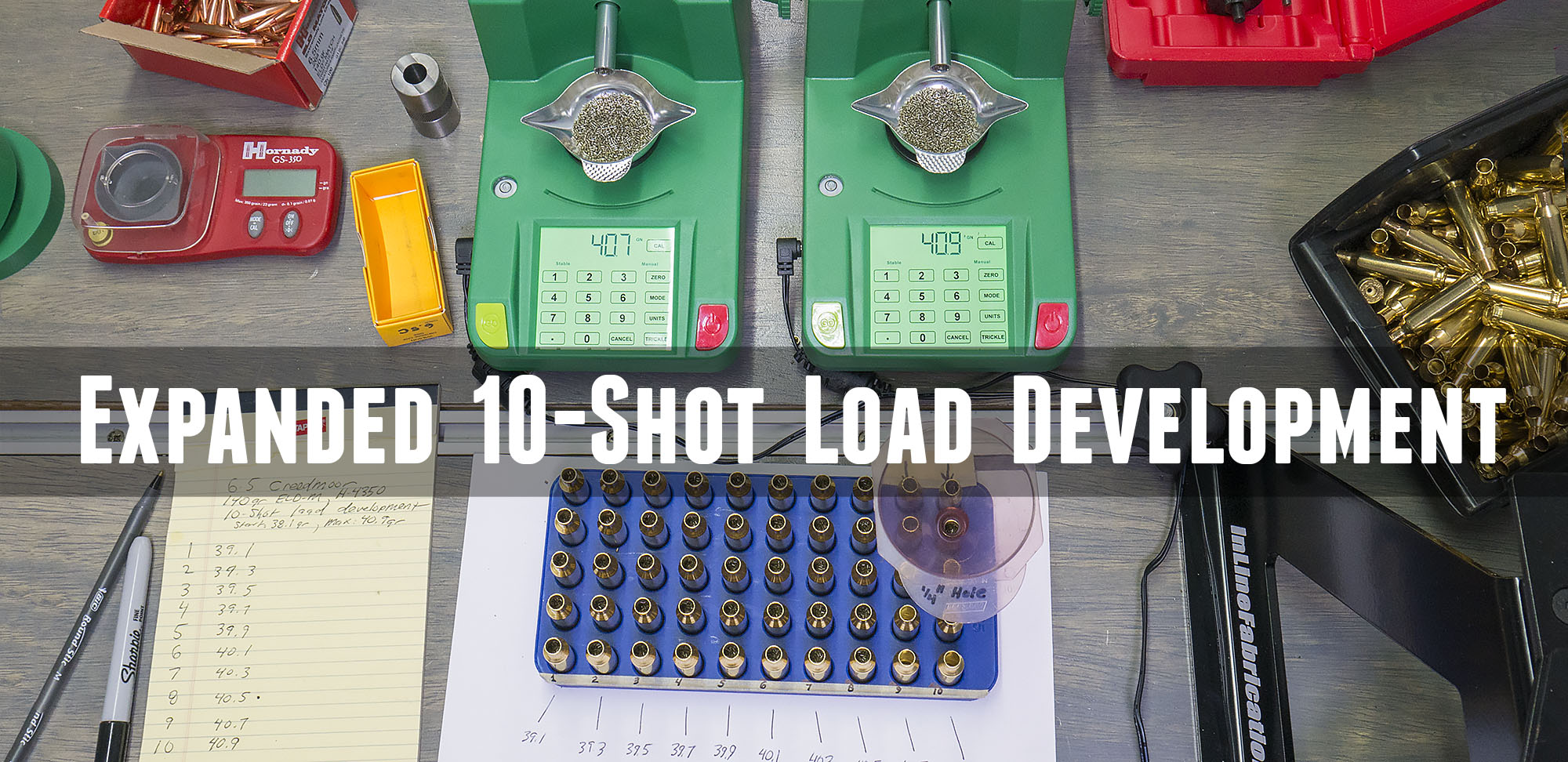
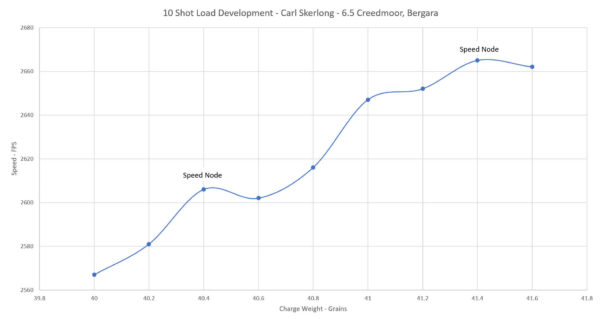
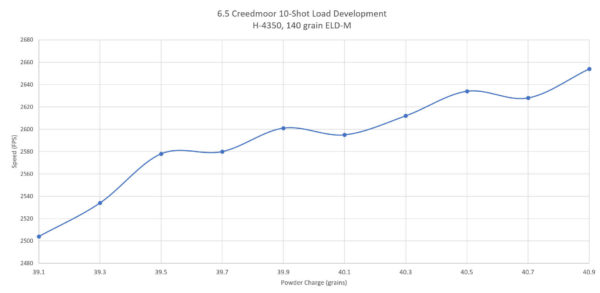
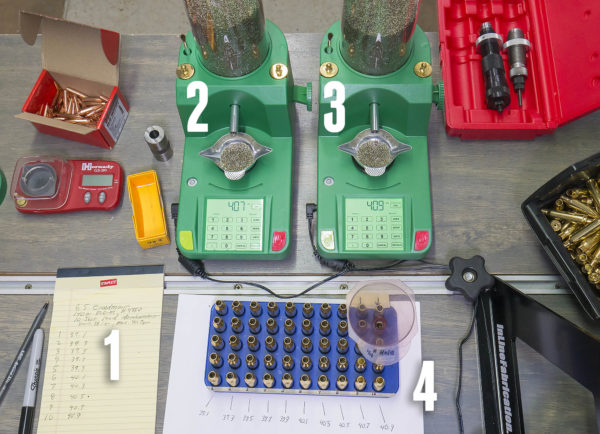
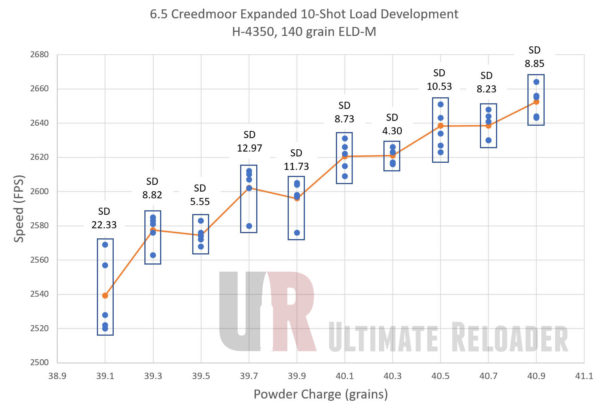
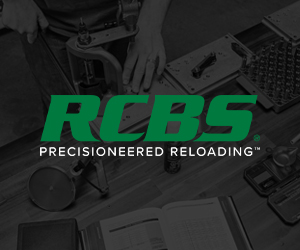

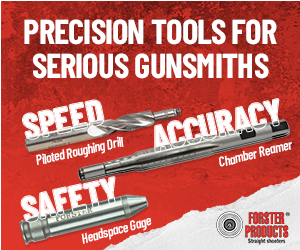





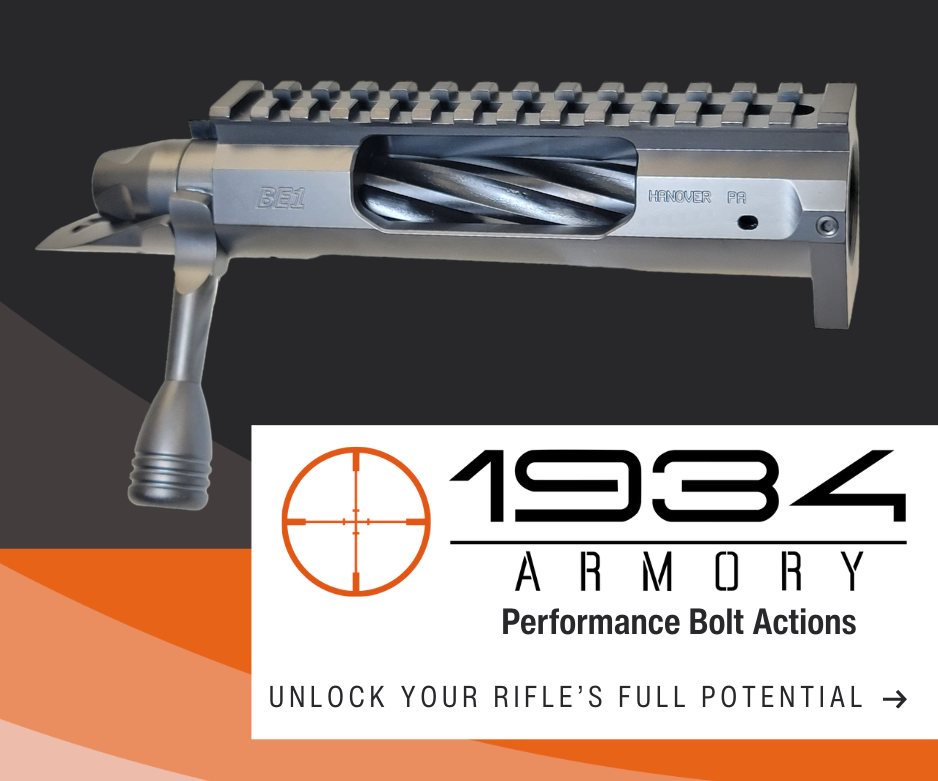






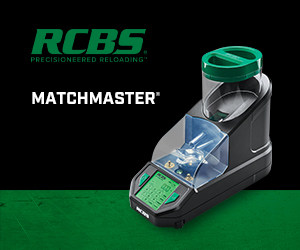





















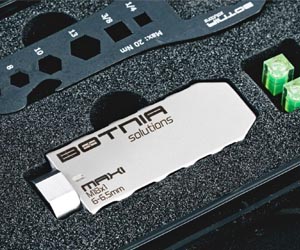






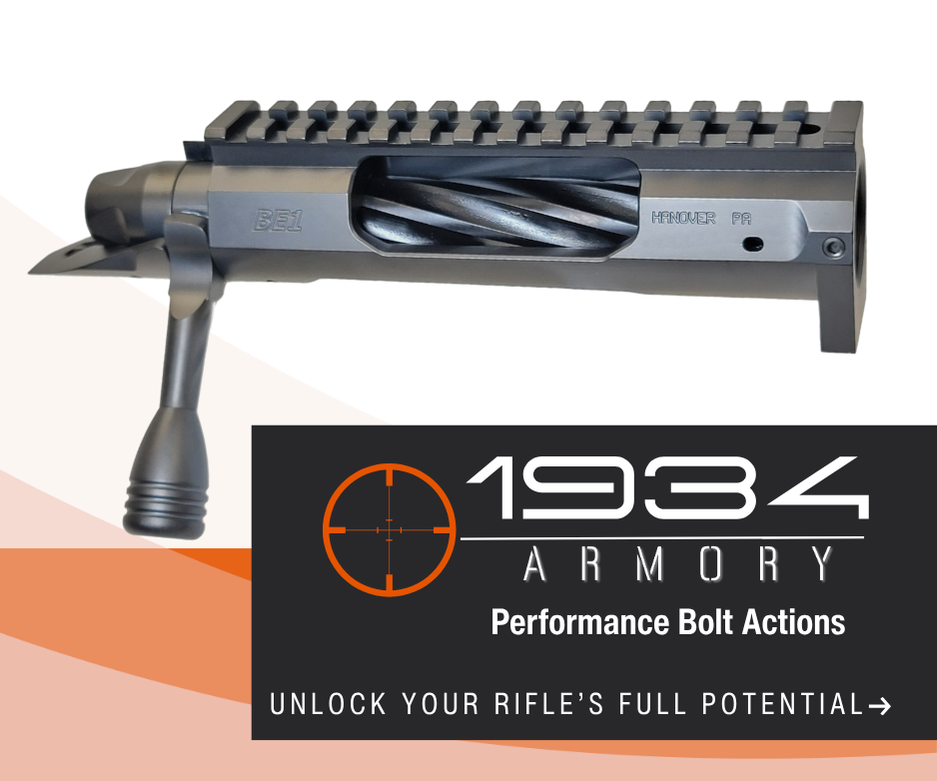




























For those of us in the “slow corner” what is the physics that would cause speed to drop off with increased load and then increase? In other words, how do you explain the “Speed Nodes”?
Gavin I like what you are doing here however I do have some comments on the actual machinery involved, and how to simplify that.
First: you need a Scale that actually repeats. Something on the order of an RCBS 1010 or earlier Ohaus Version of the same instrument. A set of check weights should be included as that is how you calibrate the Scale. This is the fail safe method of weighing powder charges. IE: what you think you got, is actually what you got, adn not something else.
Electronic Scales all have one thing in common. Whatever the “resolution” is, is corrupted by @ half that amount on either side of the Nominal Reading.
In other words with .1 gr resolution as an example if the charge weight is 40.0 gr as indicated by the readout, the actual charge weight may be as much as 40.05 or on the low side 39.95. You can see that the actual window of actual weights is .2 gr and this is under the most ideal of conditions. Other factors present that affect a Digital Instrument (of any kind) are Temperature, Humidity, External Noise, Electronic Interference, Ground Vibration, how long the instrument is turned on (Warm Up) How you are holding your mouth,and the list goes on. Also when dealing with multiple digital scales, getting them to all agree is not necessarily an indication of accuracy. All it means is they are either all right or all wrong.
A mechanical scale that is calibrated against known standard check weights at several different weights is the most accurate method of insuring that 40.3 gr is in fact 40.3 gr in the real world. The RCBS 1010 literally allows you to see changes when adding individual granules of Ball Powder like BL-C2 !
The Digital Scale will maintain the same reading until the upper limit of the Load Sensors’ resolution is exceeded, and then change to the next higher reading,,, or more depending on it’s quality. There can be many granules of powder in .1 gr.
The reason for all of this is the simple fact if you establish a load of X.x gr as your most accurate load one day during the summer using a Digital Scale, it may not repeat to that same number in the Fall, even though it says it has. The Mechanical Scale will.
The other point here is that loading your ammo at the range is the best way of finding that perfect load without loading a bunch of ammo that doesn’t perform as expected. You load ammo in groups of 5 until your goal is met and then go home. No ammo to pull down when you get home,,, just big smiles.;>)
I know you are going to address this method soon .
Randy
Buchanan Precision Machine
Hey Gavin,
Be interested for a download of an excel spreadsheet where I can enter my data and it gives me the graph with the 5 shots dotted (little rectangles). I can’t for the life of me find out how to do one of them graphs!
Cheers and keep up the good work
I am interested in this as well. Ive created some spreadsheets in the past for tracking this stuff, but nothing like what Gavin showed off. Please Gavin, share with us!
Gavin:
At what point in this load development scenario would you look at bullet seating depth as another variable in the search for a custom load?
Gavin, really enjoyed the 10 Shot Load Development video.
I own a Magnetospeed chronograph and would like to know how to use the data card and co-ordinate the data from the chronograph with Excel on the computer.
I’m not the most competent “computer wizard” so a video showing how to co-ordinate the two and create a graph would be helpful.
Note: I do use Excel quite often for household bookkeeping. But I have never done any graphing with it. Thx.
Gavin: really enjoyed the 10 Shot Load Development video.
A video on how to transfer the data from the Magnetospeed Chronograph (I have one) data card into the computer and use the data to create a graph as illustrated on the video.
I have used Excel for various household chores, but I have never created a graph. Your instruction would be very helpful. Thx.
I would also Like to see how you export everything into Excel,
Pretty simply, take the micro SD out of the field display, put it in the converter SD, put the converter in the computer.
Excel: two columns – with titles “charge” & “velocity”.
under each column heading enter your results.
Actual charge weights of powder, and resulting measured velocity.
(save your work)
Select/highlight the headings and the data.
Click INSERT menu, RECOMMEDED CHARTS.
SCATTER chart with data points works well.
(you can experiment a bit, and Ctrl-Z lets you back out and try another)
This is Excel 2016 on Windows – other versions may vary somewhat.
I can’t believe no one thanked you. Thanks a lot. I’ve been wondering how to set that up.
Hi Gavin
Very informative video but a couple of questions?
What was the bullet seating depth used “off the lands”? Also during the 50 shot test, how much time did you allow the barrel to cool between each 5-shot string?
Thanks
Hi Gavin
Great video as always. I have one question. Did you do anything with the new brass before loading for this test? I normally run new brass through my Sinclair mandrel die to help insure or at least attempt at making neck tension more consistent.
Gavin, I like your analysis methods, maybe I can help shed some light on what is actually happening. Ever since the OCW method came out, I’ve been trying to find actual factual information on what is happening inside the rifle that causes bullets to disperse across the target. I’ve compiled what I’ve found into a notebook that I publish on my web site. In the section on Finding The Right Load I go into the physics of barrel motion using information VarmintAl provided when he ran a finite element analysis of his friend’s bench rest rifle. I’d like to get with you to discuss and investigate in more detail. I recognize that the 10 shot velocity method works, but I have not found any actual explanation of how it works. In any case, at present I’m down to 25 shots to achieve a competition ready low SD high accuracy load using ‘old school’ techniques. Looking forward to talking about it some more … shoot me an email.
Sounds great, I’ll reach out to you!
Hey Gavin, interesting article.
Great channel, always like to see how others test. This looks like a good data driven method. I have found ladder tests reveal what looks like similar information you see in your data, but the interesting thing to me was the low esd right in the second node almost eveytime the speed bumps up another node. I suspect this is the same group at the top of my ladder test. I use this as my go to load and tweak distance from lands to tighten the group up from there. Really keen to see your group results in the future.. I went looking for the article/video by guesses you were still working on it. Thanks Again.
Just got a Bergara rifle and Hornady ELDM factory ammo. They list 2710 fps on their boxes.
I’m a new reloader who struggles to get better results than factory. I’m the problem no doubt, or one of the 1,000 variables.
Question – your loads, and others I’ve seen tested are all less than the 2710 fps Hornady reports. Would we not assume that Hornady is producing what they have found to be very accurate in whatever they ran their loads thru? Yes, they had to dial everything back for safety and physical rifle and chamber differences, but even then their 2710 beats your speed. I’m assuming you stopped short of reaching 2710 based on recommended max loads and examination of cases following shooting. So many questions, sorry so ignorant.
I would also have expected serious controls on the brass you loaded to make sure that whole aspect was as controlled across the 50 loads as possible, but you didn’t address that at all.
Also it doesn’t seem logical that speed / pressure wouldn’t change in a hot barrel vs a cold one.
Just came across this post. An FYI…Ammunition temperature will change your muzzle velocity. A hot barrel will increase the temperature of round in the chamber. The velocity increase is dependent on how long that round sits in a hot chamber to be warned up. The same is true for ammo that sits out in the sun for a long time before being shot.
TiborasaurusRex discusses this somewhere is his Sniper 101 YouTube series. I tested this myself and had similar results.
Yes, that’s a good insight- I see the same thing. Thinking about using a non-contact thermometer to monitor barrel temps (hold steady for this kind of testing).
I had very similar observation if I had where in my five shot string that I had a slightly longer delay in actually firing the round I could tell by the velocity from the chronograph that yes indeed that extra 30 seconds in the chamber did make a difference and increased the temperature of the round, the powder and therefore a higher velocity. I believe that consistency and read. Ability is extremely Paramount at this point. I had to 5 round strings that I shot and both of the very last round in those strings was left in the chamber a little bit longer and both of those blasted he’s really made the extreme spread of the data much greater and obviously changed the standard deviation. Once you’ve done this then your data is not really accurate to what reality is. I did take the time to allow my Barrel to cool for at least 5 minutes between 5 shot strings. This did help each string seem to be more consistent however during each individual 5 round string of shots if there was a delay and a little bit longer chamber time it did make a difference for the speed of that individual data point. Consistency, consistency, consistency.
If work up a touch more you’ll find a great node
Around 2730 and 2770 FPS are great nodes in 6.5 creedmoor
Gavin could you supply a link to the Excel charts that you used? I have beem trying to make similar charts but am having some trouble. This obviously could be customized for the individual user but the chart to have obviously have also been tweet for very good usage it looks like. And by the way thanks in advance!
Good article. I noticed that the loads you seem to be testing are all relatively conservative. Is there a downside to loading hotter loads as long as I don’t see any signs of excess pressure? I loaded up to 2867 fps MV (136 gr Lapua Scenar L, 43.6 gr of H4350 and a CCI 400 primer) and showed no signs of pressure; the case head expanded by .0004 and the case was .002 longer – it was new Lapua 6.5 CM brass. Is there any reason not to keep going up a little more (.2 gr increments)?
Gavin
Have you tried this test with the 50 BMG? I was wandering what kind of increments would you suggest. Rifle is a single shot AR50 completely stock. Being H50BMG is discontinued I am trying the Reloader 50 powder. Thanks.